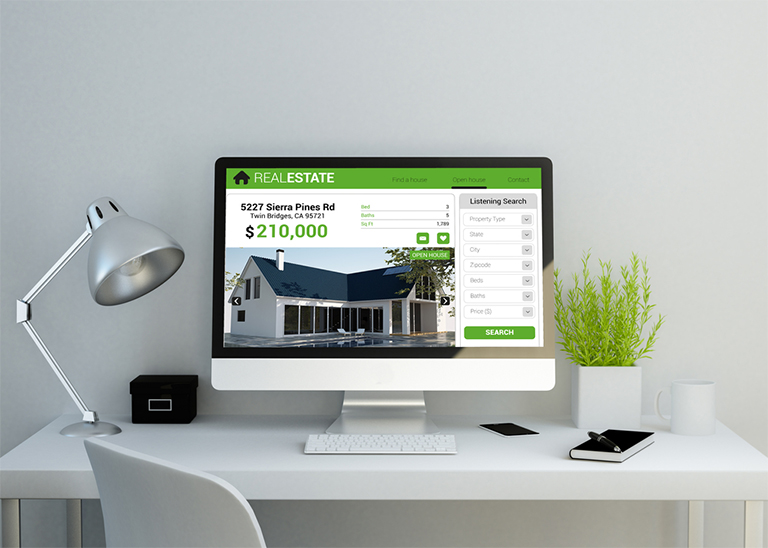When someone searches for a new property or plans to sell one, the first place they visit is usually a real estate website. A well-designed website doesn’t just display listings; it helps visitors take the next step, whether it’s booking a visit or contacting a realtor. Many websites fail to convert visitors into leads because of a lack of thoughtful design. Let’s explore how real estate businesses can upgrade their websites to generate better leads, combining professional design with advanced tools and trust-building strategies.

What Makes a Real Estate Website Valuable?
A real estate website Design must do more than show property listings. It should act as a complete support system for buyers, sellers, and investors.
This includes:
- A clear layout
- Quick search and filters
- Professional visuals
- Fast-loading pages
- Easy communication options
But beyond these, there are more strategies that can boost your site’s ability to capture leads and increase client trust.
1. User-Friendly Website Structure
Visitors don’t stay on confusing websites. Your layout must be easy to navigate, with clear headings and intuitive menus. Keep the design clean, use white space wisely, and highlight important sections like search bars, contact forms, and featured listings.
Pro tip: Use breadcrumb navigation and sticky menus to help users explore more without getting lost.
2. Fully Optimized for Mobile
Most users search properties on their phones. Your website should load smoothly on all devices, with no missing buttons or broken layout. Mobile responsiveness also helps you rank higher in search results.
Extra feature to add: Test the website with different screen sizes and use Google’s mobile testing tool to catch any mobile issues early.
3. High-Quality Visual Content
Images speak louder than text. Use professional photos of both interiors and exteriors. Include video walkthroughs or 3D virtual tours. These help visitors imagine themselves inside the property.
Tip: Add ALT tags to images for SEO and accessibility. It also helps visually impaired users understand the property.
4. Strong Call-to-Actions (CTAs)
CTAs guide your visitors to take action.
Use clear buttons like:
- “Book a Free Consultation”
- “Schedule a Visit”
- “View More Details”
Make these buttons stand out by using contrasting colors and placing them near property images, blog posts, and contact forms.
Suggested add-on: A/B test two versions of your buttons to see which one gets more clicks.
5. Offer Valuable Content Regularly
Content builds trust and keeps visitors returning.
Share:
- Area guides
- Home-buying or selling tips
- Legal requirements in property transfer
- Investment trends in real estate
Example: Instead of just saying “2-bedroom flat for sale,” write a short story: “Wake up to Burj Khalifa views in this luxury 2-bedroom apartment with modern fittings.”
6. Smart Property Search Tool
This is one of the most-used features on real estate web Design.
Allow users to filter by:
- Location
- Budget
- Number of rooms
- Property type
- Availability (Rent or Buy)
Bonus features: Add filters for schools nearby, metro access, or pet-friendliness. Also, let users save their search or receive notifications on new listings.
7. Client Reviews and Testimonials
Positive reviews from past clients can help build credibility. Add a dedicated section for testimonials, and update it regularly. Video testimonials or Google reviews widget can make your feedback more real.
Extra tip: Ask users to leave a review after closing a deal and offer a small thank-you gift in return.
8. Connect with Social Media
Link your website with Facebook, Instagram, TikTok, and LinkedIn.
Post:
- New listings
- Real estate tips
- Office achievements
- Client success stories
Automation tip: Use tools like Buffer or Hootsuite to schedule posts and automatically share listings from your site.
9. Clear and Accessible Contact Options
Make it easy for users to reach you.
Add:
- Phone number
- WhatsApp click-to-chat
- Email address
- Quick contact form
- Google Maps with office location
Pro move: Use live chat or AI-powered chatbots for 24/7 response. Many leads are lost because queries go unanswered after office hours.
10. Integrate CRM Tools for Lead Follow-up
When someone fills out a form, what happens next? If you don’t follow up quickly, they move on. Connect your website to a CRM like HubSpot, Zoho, or Bitrix24. Automatically store leads, assign them to sales agents, and track follow-ups.
Also try: Use email automation to send property alerts or newsletters.
11. Add Lead Magnets to Increase Signups
Instead of waiting for people to contact you, give them a reason to.
Use lead magnets like:
- “Free Property Valuation Tool”
- “Download Area Price Report”
- “Get Loan Eligibility Check”
This helps you collect emails and nurture potential clients.
12. Trust Badges and Security
Display trust signals like:
- Verified Agent status
- SSL certificate
- “100% Secure” badges on forms
- Memberships in real estate associations
Reason: First-time buyers or sellers often fear scams. These symbols reduce anxiety and build confidence.
13. Measure and Improve with Analytics
Install Google Analytics and Hotjar. Track:
- Where users click
- How long they stay
- What pages make them leave
Use this data to adjust CTAs, remove confusing text, and improve slow-loading areas.
Bonus: Add Facebook Pixel or Google Tag Manager for retargeting ads.
14. Improve Speed and Accessibility
A slow site increases bounce rates. Compress large images, use caching plugins, and choose a reliable web host. Also ensure accessibility features like:
- ALT text for all images
- Font size adjustments
- High-contrast design for readability
Final Thoughts
Creating a real estate website that generates leads is not just about design; it’s about building trust, offering value, and making communication easy. By merging strong visuals, smart tools, and user-centered content, you can turn casual visitors into loyal clients. Always test, update, and listen to your audience’s behavior.
Apply these strategies step-by-step, and you’ll see a measurable improvement in both website engagement and quality leads.


